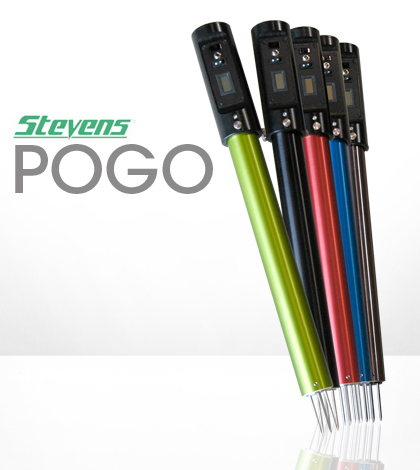POGO soil moisture sensor makes monitoring as easy as ‘poke and go’

It connects via Wi-Fi, comes in multiple colors and has an LED screen, but it’s not a smartphone. It’s the POGO.
As soil moisture sensors go, that’s a pretty interesting name.
“It stands for ‘poke and go,’” said Keith Bellingham, soil scientist at Stevens Water. “The idea is that you go out into the field, put it in the ground and can take measurements quickly.”
The portable soil moisture sensor is the third generation of POGO, and Bellingham says previous versions did similar things, like collect temperature, moisture or bulk electrical conductivity.
“This one is different in that it hosts a Wi-Fi module you can use with a smartphone app,” said Bellingham. “The sensor can be controlled within the app. Data can be stored on the phone and then exported.”
The in-app controls include changing the soil type the probe is in, collecting data and emailing data reports to a user’s email account in a CSV file, among others. Bellingham noted that the Wi-Fi module allows for connecting to the sensor and using the app, but a user cannot surf the web by connecting wirelessly to the POGO.
“The HydraMon app lets you go to a site and take a reading by pressing a button on the app,” said Bellingham. “To save data, use the save button. Data files are small in size – it’s just numbers.”
The Wi-Fi range was tested to be 100 feet, though Bellingham says most users will be right next to it when using the POGO.
“Most devices have Wi-Fi now and most people are familiar with turning it on and searching for networks,” said Bellingham. “The POGO will show up as a Wi-Fi device on the smart phone’s Wi-Fi connection menu and you simply connect to it.”
The app is available on Android smartphones and tablets, as well as the Apple iPhone, iPad and iPod Touch.
Bellingham says the POGO has an improved calibration that removes interferences which could affect readings. That and other improvements drew inspiration from customer feedback.
“POGO’s sensor is more sturdy and accurate,” said Bellingham. “The measurement technique built into the probe looks at more aspects of reflected radio waves than other sensors and it characterizes that wave in much further detail.”
When users are spot sampling, they can use the unit’s LED screen to monitor its battery’s voltage. They can also enjoy the color they chose for their POGO. Black, blue, green, red and silver versions are offered. The best seller?
“Green is probably the most popular. Blue does pretty well,” said Bellingham. “Silver does OK, too.”
Weighing less than four pounds, Bellingham says the POGO is a convenient and cost-effective option for users.
“Most applications of the soil sensor itself are with it connected to a data logger,” said Bellingham. “With the POGO, you don’t need a data logger.”





0 comments